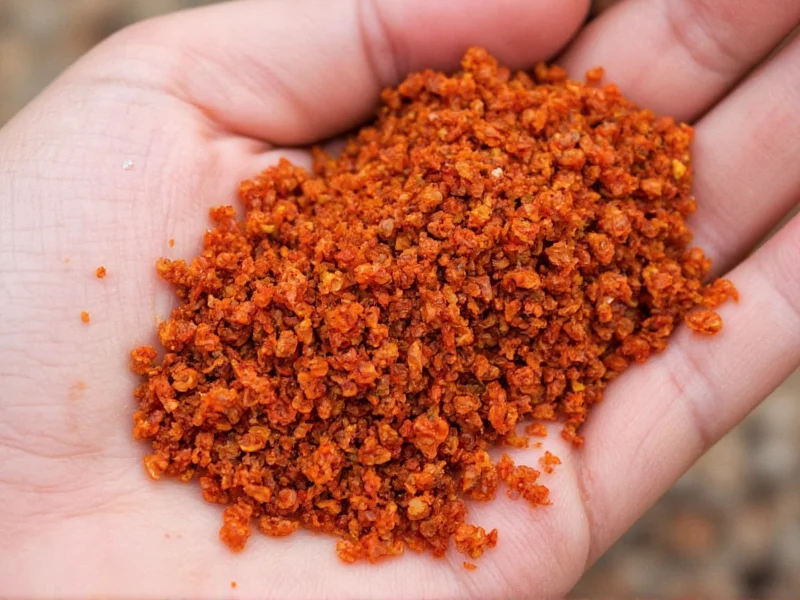When you're standing in the spice aisle wondering whether to grab chili flakes or crushed red pepper, the answer is simpler than you might think. These terms describe the same pantry staple: dried, ground chili peppers that add heat and flavor to dishes. The confusion stems from inconsistent labeling practices across brands and regions, not from any meaningful difference in the product itself.
Understanding the Terminology
The terms “red pepper flakes,” “crushed red pepper,” and “chili flakes” are used interchangeably in most commercial contexts. Despite the different names, they typically contain the same primary ingredient: dried cayenne peppers. Some specialty blends might include other chili varieties, but standard supermarket products are functionally identical.
Composition and Ingredients
Most commercial products labeled as either chili flakes or crushed red pepper consist of:
- Dried cayenne peppers (the primary component)
- Occasionally other chili varieties like ancho or jalapeño
- No additional ingredients in pure forms (check labels for additives)
When comparing chili flakes vs red pepper flakes substitution in recipes, you'll find they perform identically. The heat level typically ranges from 30,000 to 50,000 Scoville units, placing them in the medium-hot category—significantly milder than pure cayenne powder but hotter than paprika.
| Characteristic | Chili Flakes | Crushed Red Pepper |
|---|---|---|
| Primary Ingredient | Dried cayenne peppers | Dried cayenne peppers |
| Heat Level | Medium (30,000-50,000 SHU) | Medium (30,000-50,000 SHU) |
| Texture | Coarsely crushed flakes | Coarsely crushed flakes |
| Flavor Profile | Earthy, slightly smoky | Earthy, slightly smoky |
| Common Uses | Pizza, pasta, marinades | Pizza, pasta, marinades |
Practical Differences (or Lack Thereof)
Despite the different names, are red pepper flakes the same as cayenne pepper in practical cooking terms? Yes, with one important distinction: cayenne powder is significantly hotter and finer than either chili flakes or crushed red pepper. The flakes contain both seeds and skin of the pepper, creating a more complex flavor profile than pure cayenne powder.
When examining chili flakes vs crushed red pepper side by side, you might notice slight variations in:
- Particle size: Some brands process their product slightly finer or coarser
- Color: Minor differences based on pepper ripeness at harvest
- Heat level: Small batch variations (but generally within the same range)
Substitution Guidance
Understanding can I substitute crushed red pepper for chili flakes is straightforward: yes, in a 1:1 ratio. They work identically in recipes for:
- Italian dishes (sprinkled on pizza or pasta)
- Marinades and rubs
- Sauces and soups
- Roasted vegetables
- Breakfast dishes like eggs or avocado toast
If you're wondering what is the heat level of crushed red pepper compared to other spices, it falls between paprika (mild) and cayenne powder (very hot). The flakes provide both heat and texture, while the powder delivers more concentrated heat without the visual appeal of red flakes.
Common Misconceptions
Several myths persist about these products:
- Misconception: Crushed red pepper contains multiple pepper varieties
Reality: Most standard products use only cayenne - Misconception: One is significantly hotter than the other
Reality: Heat levels are virtually identical across brands - Misconception: They come from different parts of the pepper
Reality: Both contain the same combination of skin, seeds, and membrane
Practical Usage Tips
For best results when using either product:
- Add flakes early in cooking for infused heat, or at the end for brighter flavor
- Store in a cool, dark place to preserve potency (they lose heat over time)
- Toast flakes briefly in oil to enhance flavor before adding other ingredients
- Use a mortar and pestle to slightly crush flakes for more even heat distribution
- When measuring, lightly pack the flakes rather than scooping directly
Regional Labeling Differences
The terminology varies more by region than by actual product differences. In the northeastern United States, “crushed red pepper” dominates labeling, while “chili flakes” appears more frequently in western markets and international contexts. This regional variation explains much of the confusion around is chili flakes the same as crushed red pepper.
Frequently Asked Questions
Can I use chili flakes instead of crushed red pepper in recipes?
Yes, chili flakes and crushed red pepper are completely interchangeable in recipes. Use them in a 1:1 ratio with no adjustments needed. Both provide identical heat levels and flavor profiles in cooking.
Are chili flakes hotter than crushed red pepper?
No, they have virtually identical heat levels ranging from 30,000 to 50,000 Scoville units. Any minor variations come from brand differences rather than the naming convention.
What's the difference between crushed red pepper and cayenne powder?
Crushed red pepper (or chili flakes) contains coarsely ground pieces of the entire dried pepper, while cayenne powder is a fine powder made from ground dried cayenne peppers. Cayenne powder is significantly hotter and lacks the texture of flakes.
How should I store chili flakes or crushed red pepper?
Store both in an airtight container away from light and heat. Properly stored, they maintain potency for 1-2 years, though they gradually lose heat over time. Avoid storing above the stove where heat and moisture fluctuate.
Why do some recipes specify one term over the other?
Recipe authors often use the term common in their region. Northeastern US recipes typically say 'crushed red pepper' while western US and international recipes may say 'chili flakes.' The choice reflects regional naming preferences rather than any actual ingredient difference.











 浙公网安备
33010002000092号
浙公网安备
33010002000092号 浙B2-20120091-4
浙B2-20120091-4